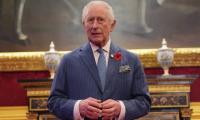The one thing that has not been lacking in Pakistan is the potential for economic growth. It takes little imagination to understand that a country with a population of over 200 million could become a major global marketplace for the production of goods and services. The trouble is that estimates of how much growth could be possible can be as high or low as one wants. This is why one must wonder at the World Bank’s assessment that Pakistan’s cashless economy could hit $36 billion. This is not an estimate of the real value of Pakistan’s digital economy, but an estimate of potential.
The numbers look great. It could offer a seven percent boost to the GDP, but it is unclear if this boost would come from a generation of new economic activities, or simply moving ongoing economic activities online. The part of the report that concerns the use of online methods of making financial transactions seems to simply be concerned with moving cash transactions online. How this would boost a country’s real GDP is a mystery. One would have thought GDP growth involves creating new economic activities, rather than just changing the medium of exchange.
The report seems to be promising the world. The WB claims that prioritising e-commerce could create four million jobs, mobilise over $250 billion in deposits and formalise large parts of the cash economy. The numbers look almost impossibly good. Perhaps there is a need to look beyond the fancy numbers into what the proposal is in simpler terms. Couched in a new language, the proposal peddles the same mantra that has been repeated over and over – formalise the economy – before repeating age-old myths about illiteracy as a barrier to the growth of the digital economy. The fact is that there have already been attempts at digitising finance, including the ability to make payments and transfer money via mobile phones. People use them when needed – and prefer other methods when there are superior alternatives available.
The WB would like the government to introduce a ‘real-time payments gateway,’ but when it claims this could lead to half of Pakistan’s population shifting to digital payments within a year, it should be clear that the WB is indulging in some marketing speak. What the government does depends on its ultimate goal: does it want to build a cashless economy or not? As it stands, the WB figure of one of out five Pakistanis using digital payments looks good. One must remember this is still an economy where credit card usage remains low. E-commerce has grown by accepting cash on delivery as a standard method of payment. This has all happened without major government intervention. The potential is there for digital finance, but this cannot be done by painting a dream world. The realities of Pakistan’s economy need to be taken into consideration.















